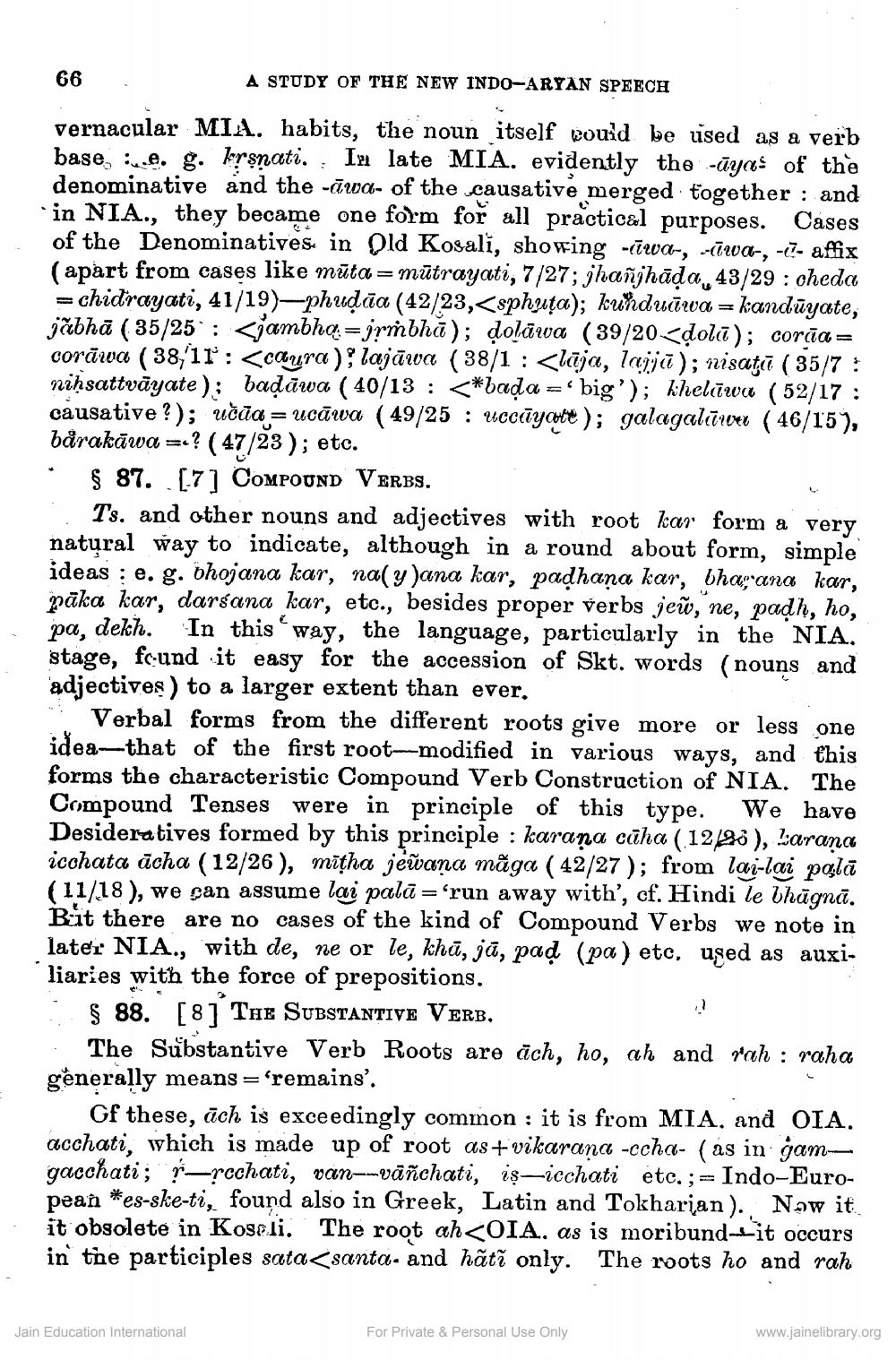________________
66 .
A STUDY OF THE NEW INDO-ARYAN SPEECH vernacular MIA. habits, the noun itself wuid be used as a verb base, :,.. g. krsnati. . In late MIA. evidently the -Ūyas of the denominative and the -āwa- of the causative merged together : and in NIA.., they became one form for all practical purposes. Cases of the Denominatives in Old Kosali, showing liwa-, -īwa-, -.- affix (apart from cases like māta=mūtrayati, 7/27; jhañjhāda, 43/29 : oheda =chidrayati, 41/19)-phudaa (42/23,<sphuţa); kunduŪwa = kandūyate, jābhā ( 35/25°; <jambha:=jrăbhă); dolāwa (39/20 <dolā); corña= corāwa (38,'11: <caura), lajāwa (38/1 : <lāja, lajja); nisată ( 35/7 : niḥsattvāyate); baļāwa ( 40/13 : <*bada =" big'); kheliwa (52/17 : causative ?); učāa = ucāwa ( 49/25 : uccīyout); galagaliiwer (46/15), bårakāwa =ı? ( 47/23); etc. · § 87. [7] COMPOUND VERBS.
Ts. and other nouns and adjectives with root kar form a very natural way to indicate, although in a round about form, simple ideas : e. g. bhojana kar, na(y)ana kar, padhana kar, bharana kar, pāka kar, darsana kar, etc., besides proper verbs jeữ, ne, padh, ho, pa, dekh. In this way, the language, particularly in the NIA. stage, fc-und it easy for the accession of Skt. words (nouns and adjectives) to a larger extent than ever. *** Verbal forms from the different roots give more or less one idea that of the first root-modified in various ways, and this forms the characteristic Compound Verb Construction of NIA. The Compound Tenses were in principle of this type. We have Desideratives formed by this principle : karana cāha (1220), Larana icohata ācha (12/26), mitha jeñana måga ( 42/27); from lai-lai polā (11/18 ), we can assume lai palā='run away with', cf. Hindi le Whāgnā. Bit there are no cases of the kind of Compound Verbs we note in later NIA., with de, ne or le, khā, jā, pad (pa) etc, used as auxiliaries with the force of prepositions.
§ 88. [8] THE SUBSTANTIVE VERB. · The Substantive Verb Roots are äch, ho, ah and rah : raha generally means =‘remains'.
Of these, āch is exceedingly common : it is from MIA. and OIA. acchati, which is made up of root as+vikarana -ccha- (as in gamgacchati; -rcchati, van--vāñchati, is-icchati etc.;= Indo-European *es-ske-ti, found also in Greek, Latin and Tokharian). Now it it obsolete in Koseli. The root ah<DIA, as is moribund - it occurs in the participles sata<santa- and hãtã only. The roots ho and rah
Jain Education International
For Private & Personal Use Only
www.jainelibrary.org




